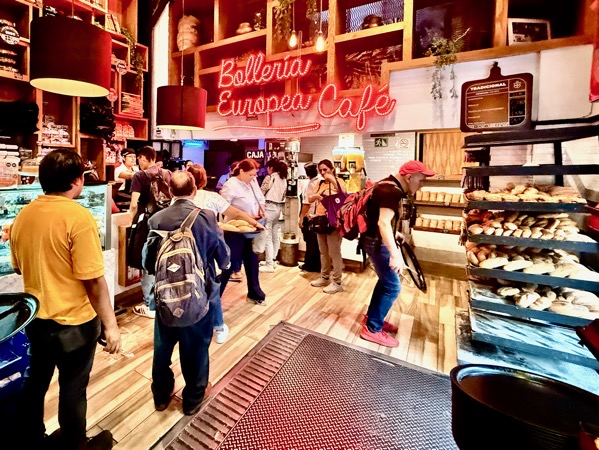Saturday, May 17, 2025
This morning, we again enjoyed a simple breakfast of pastries and espresso before calling an Uber ride around 8:30 to take us to Chapultepec Park, aiming to arrive at Chapultepec Castle just as it opened at 9:00. The ride dropped us off near the entrance, and we took a short, pleasant walk through the park in the cool morning air. We arrived at the ticket office just as the gates opened and joined a short line. Tickets were 100 pesos each, and with them in hand, we began the long, gently curving walk up Chapultepec Hill toward the castle perched at the topChapultepec Castle was originally built in 1785 as a summer residence for Spanish viceroys. In the 19th century, it became a military academy, and later served as the imperial residence of Emperor Maximilian I and Empress Carlota during the brief reign of the Second Mexican Empire. After their fall, several Mexican presidents—most notably Porfirio Díaz—used the castle as an official residence. In 1939, it was transformed into the National Museum of History, preserving its rich and complex past. Today, the castle stands as a symbol of Mexico’s layered political and cultural history.
Because we had arrived early, the castle grounds were still quiet, and we were able to enjoy the exhibits without crowds. We moved through rooms filled with artifacts, paintings, weaponry, furniture, jewelry, and historical displays. The stained-glass windows and period decor offered a vivid sense of life during different eras. From the castle’s balconies, we had sweeping views of the park below. On the uppermost level, we viewed the High Tower (Caballero Alto), surrounded by beautifully manicured gardens
After spending several hours taking in the exhibits, the architecture, and the views, we began our descent down the hill, feeling enriched by everything we had seen and learned.
—— Chapultepec Castle ——
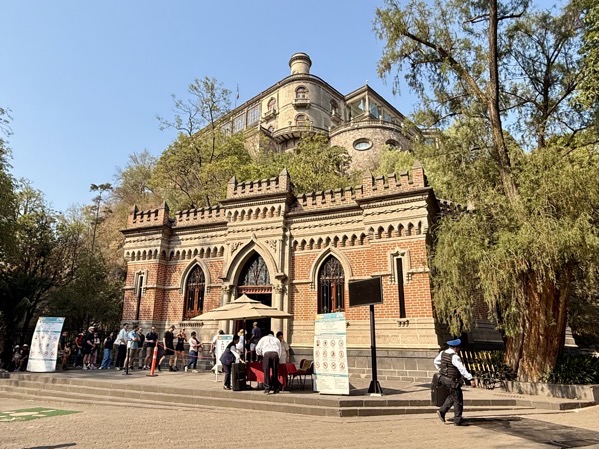
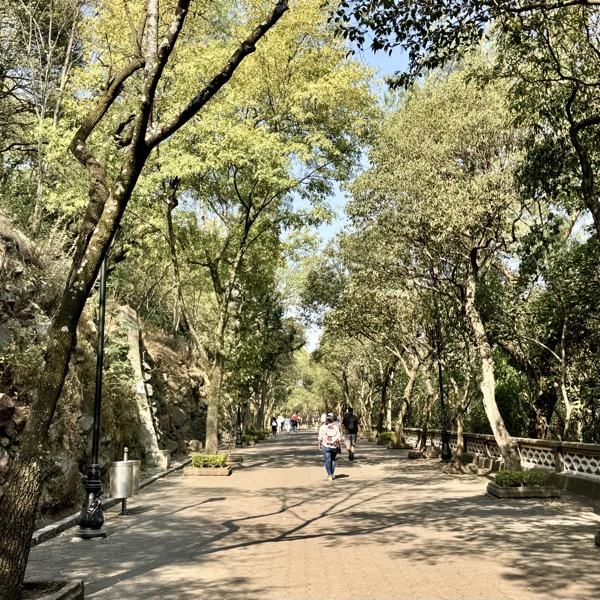
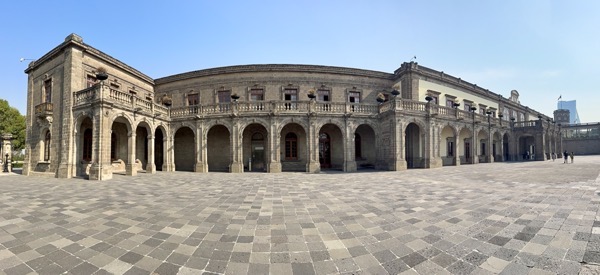

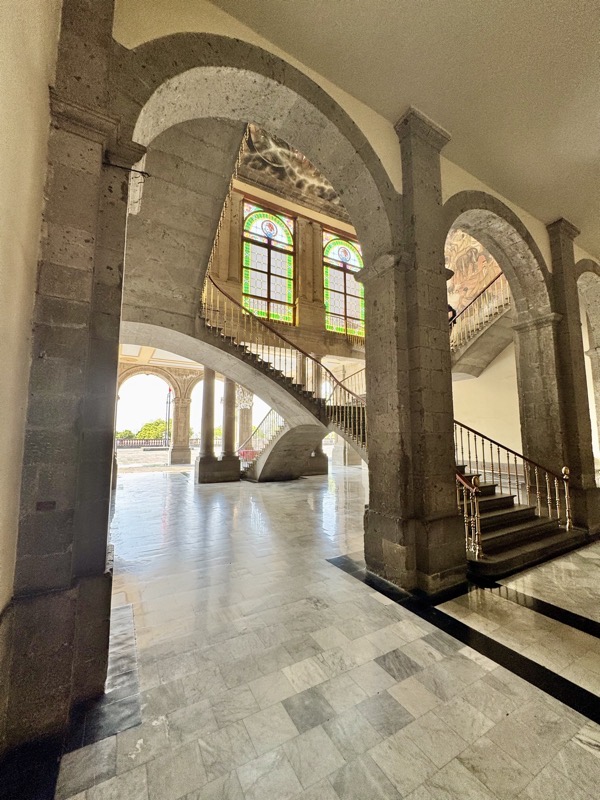
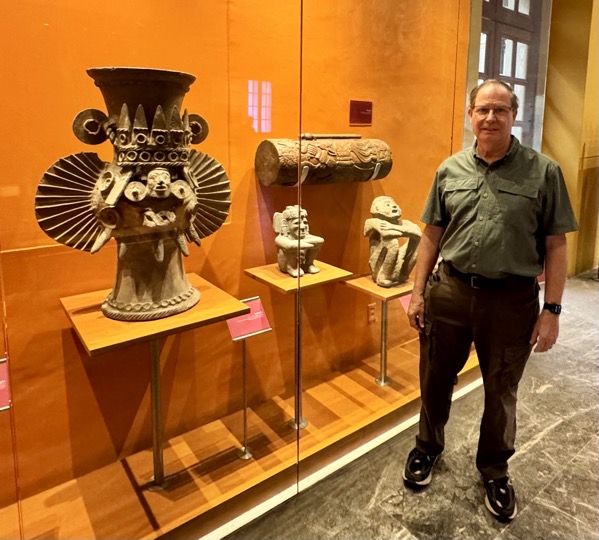
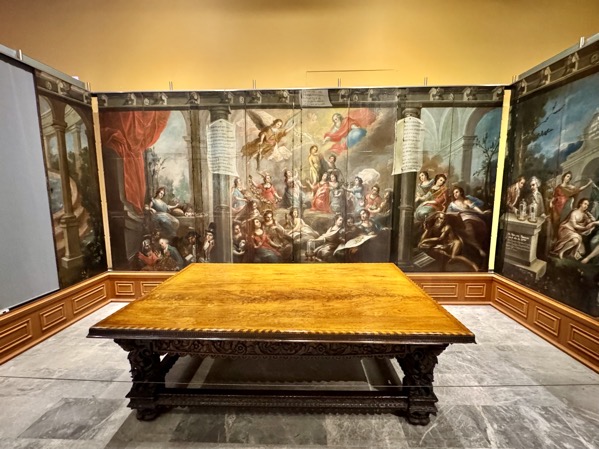
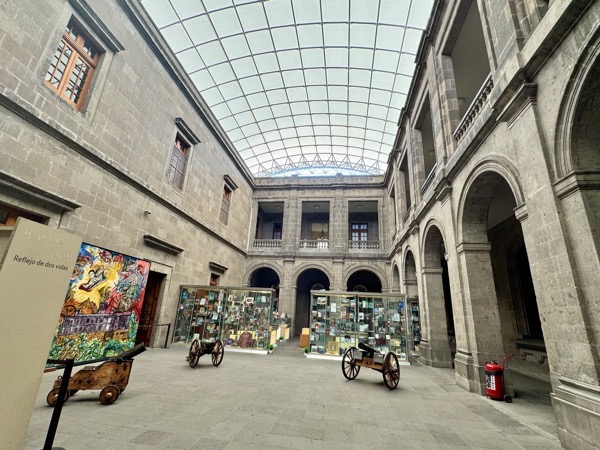

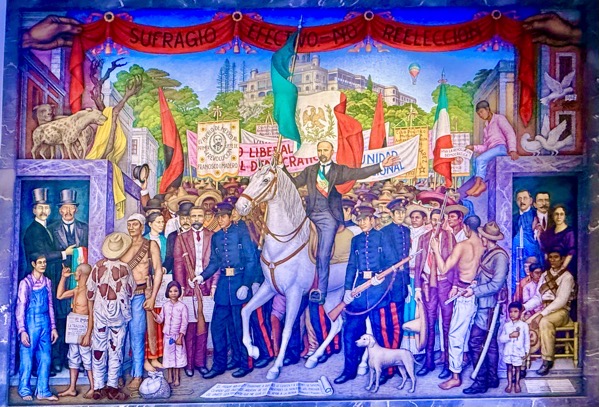
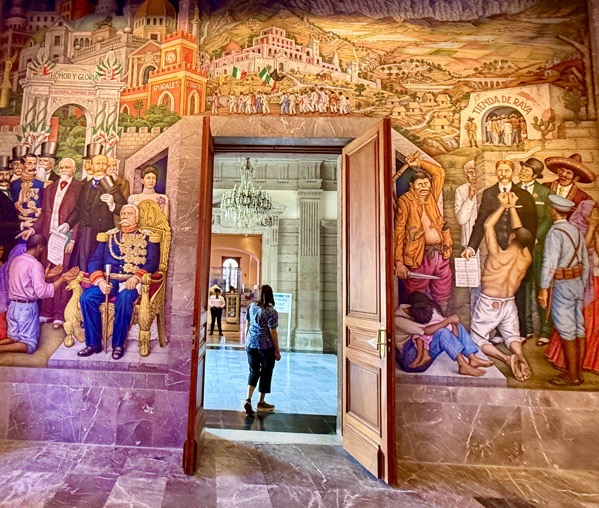
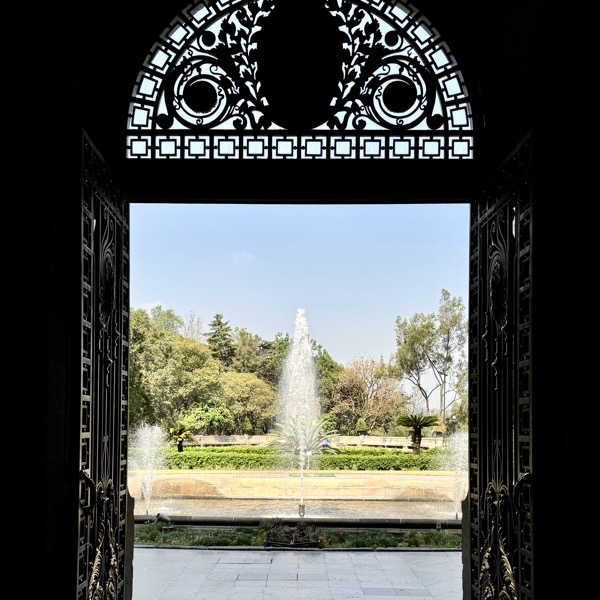
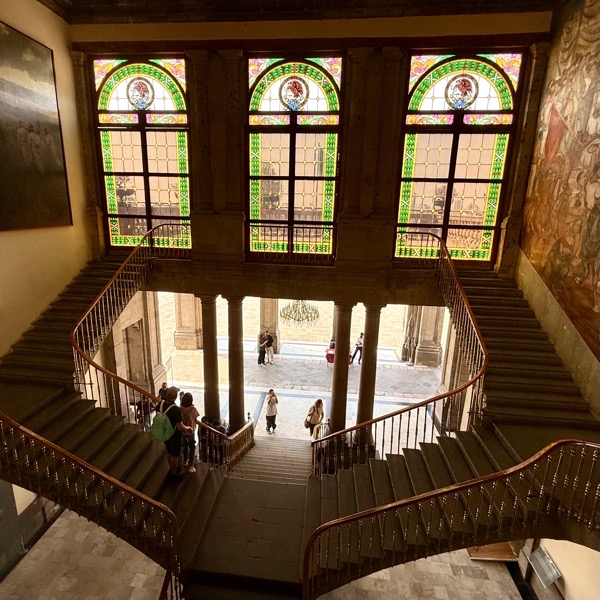

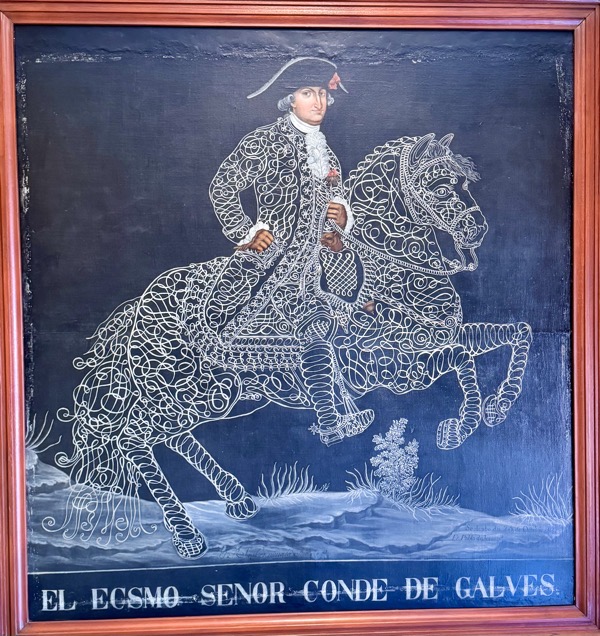
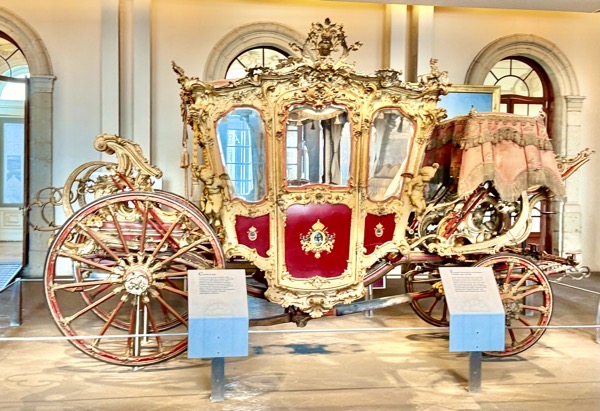
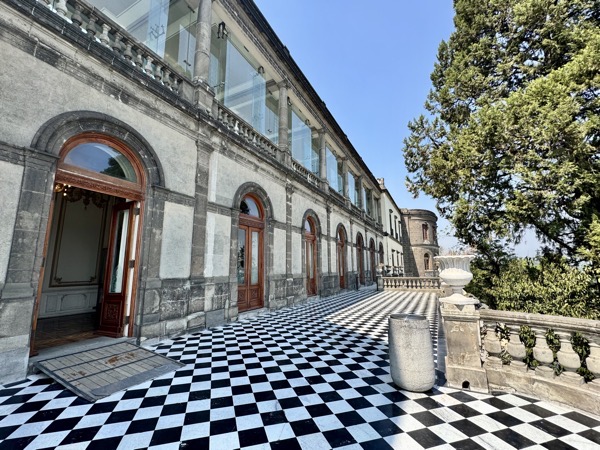
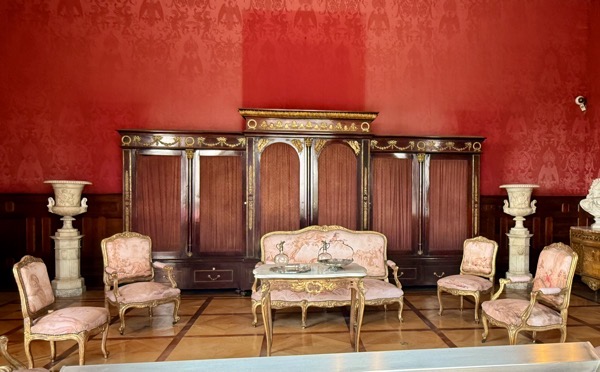
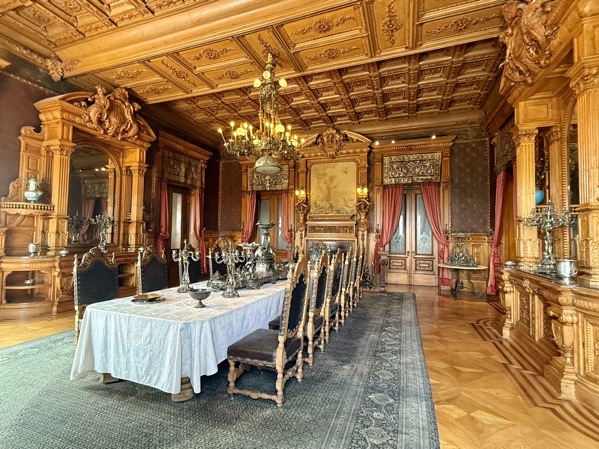
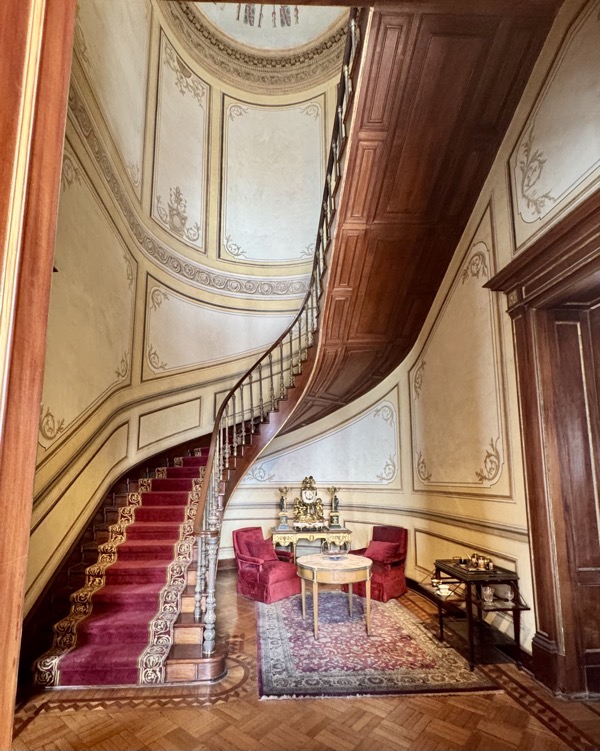
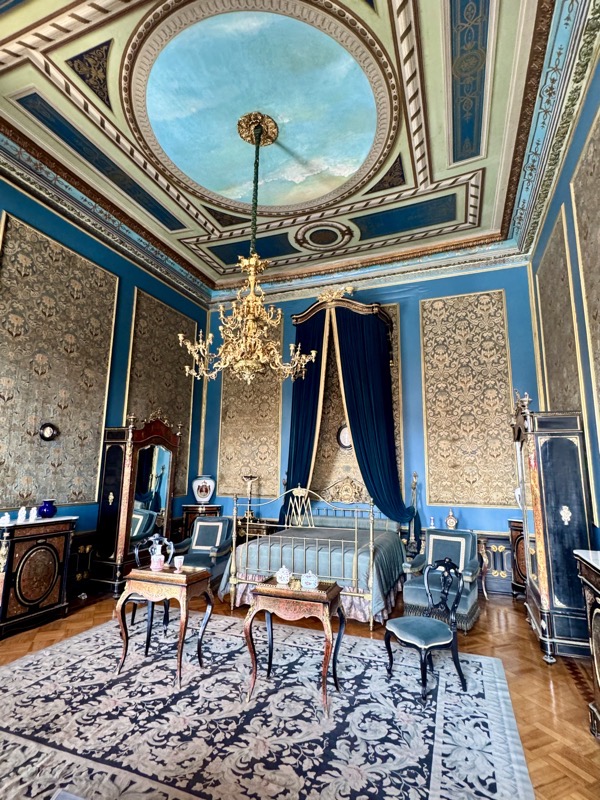
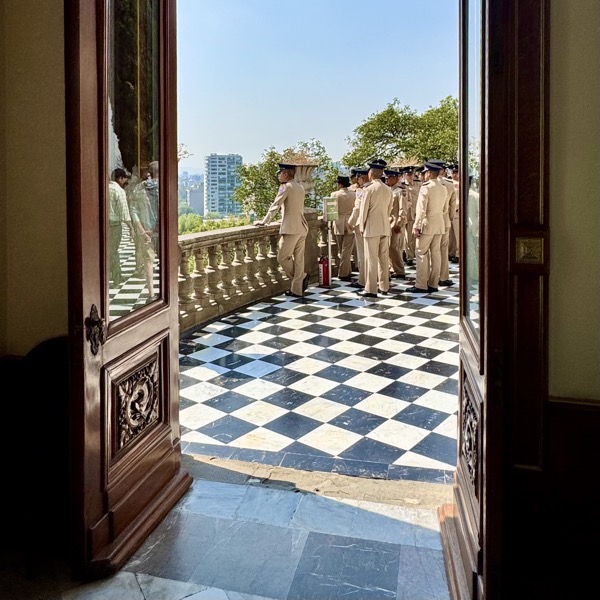
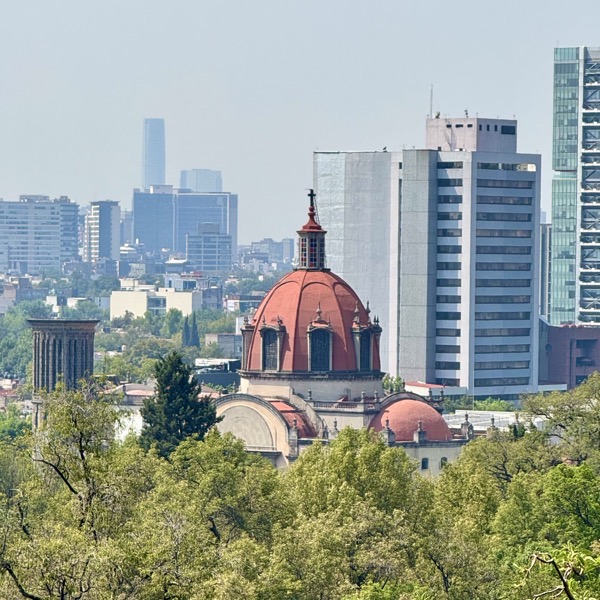
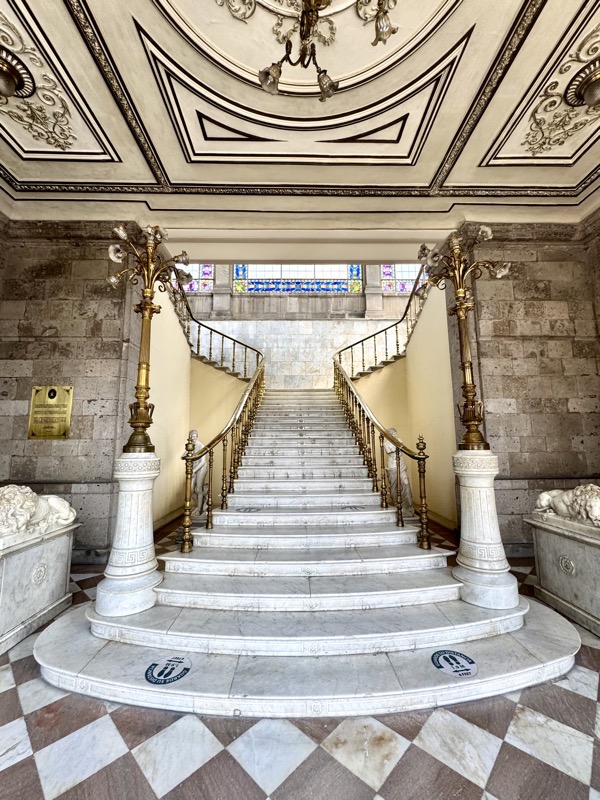

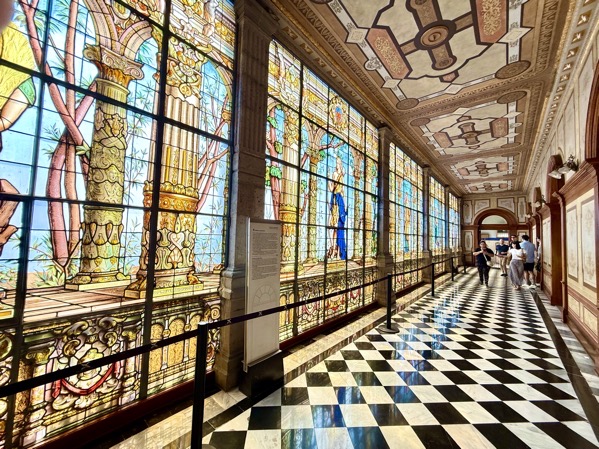
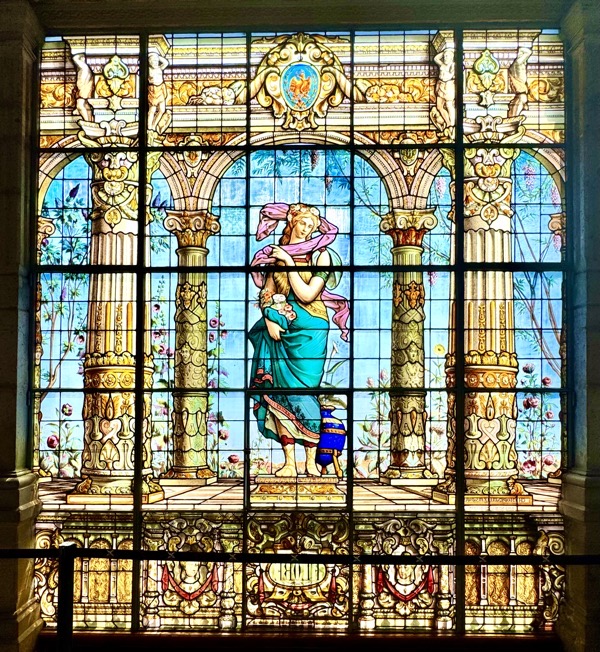
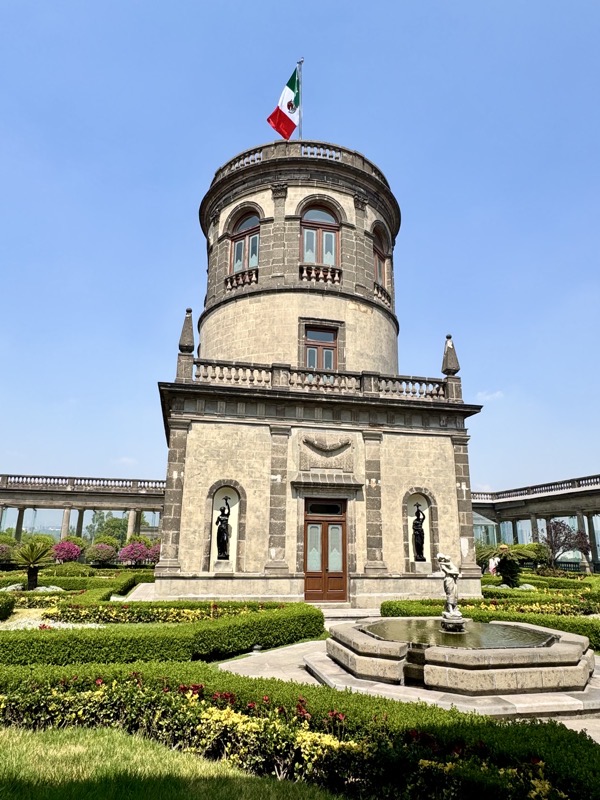
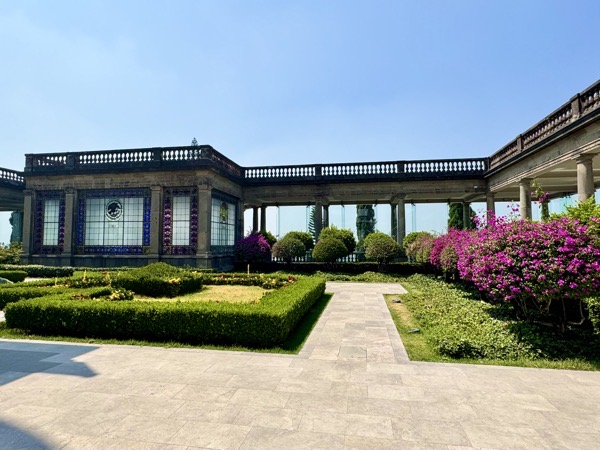
As we descended from the castle, the temperature had risen noticeably, becoming uncomfortably warm. Crowds were now pouring in, and we felt grateful for our decision to visit early. Jane was eager to try the city’s Cablebus system, which has a line that begins in the park, so we set off on foot—walking over a mile and a half through Chapultepec. Along the way, we passed by the park’s lake and were immediately captivated by towering cypress trees, larger than the ones we’re used to seeing in North Carolina, though they looked similar minus the “knees”. A quick online search revealed that these impressive deciduous conifers were Montezuma cypress (Taxodium mucronatum), a species native to Mexico and revered for its size and longevity.
—— Park Lake and Montezuma Cypress ——
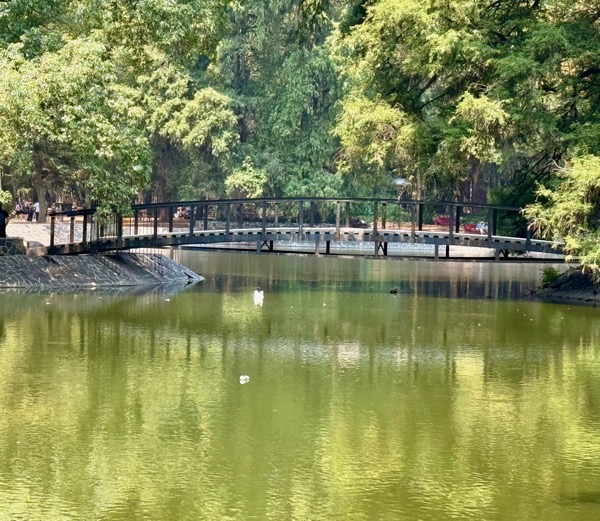
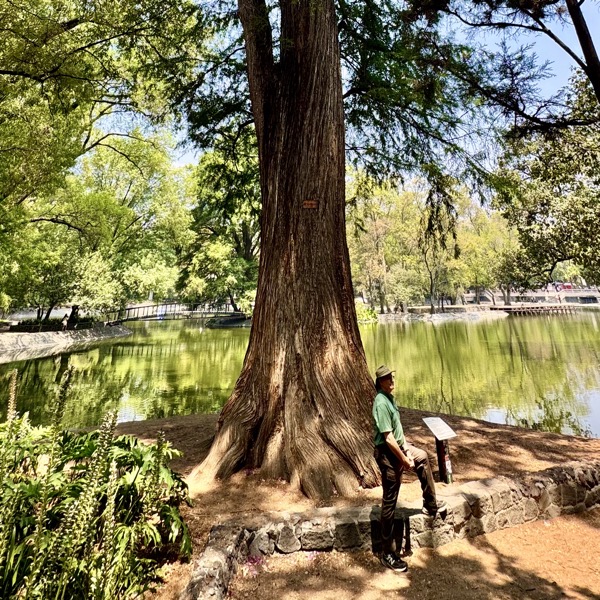
We made our way to the Los Pinos Cablebus station, where we purchased a rechargeable transit card—also valid for the metro system—and loaded it with credit. After ascending the stairs to the boarding platform, we joined eight other passengers in one of the gondola cars. This route, Line 3, travels through six stations, covering about 3.4 miles at an average speed of 12 mph, completing the one-way journey in roughly 21 minutes.
The ride offered striking views of Mexico City’s skyline, vast cemeteries, equestrian arenas, and the ever-present sea of vehicles on the roads below. It was a unique and scenic way to see a different side of the city from above. After disembarking at the final station, we promptly got in line again to catch the return ride.
—— Riding the Cablebus ——
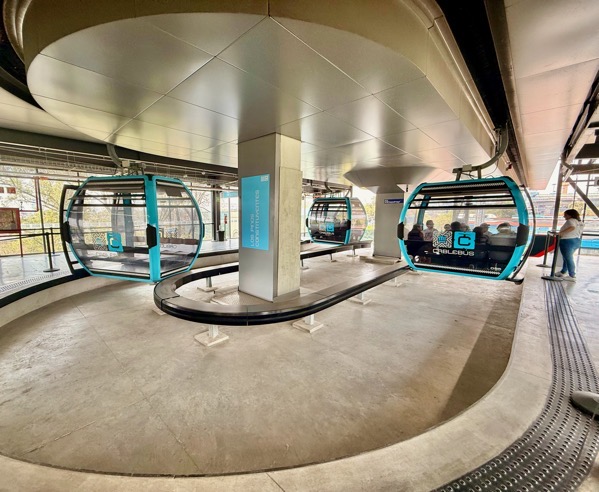
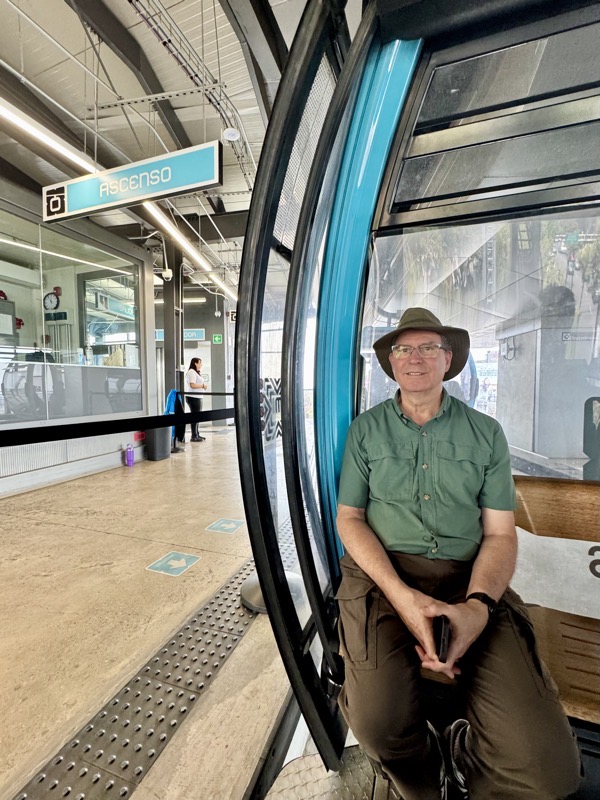
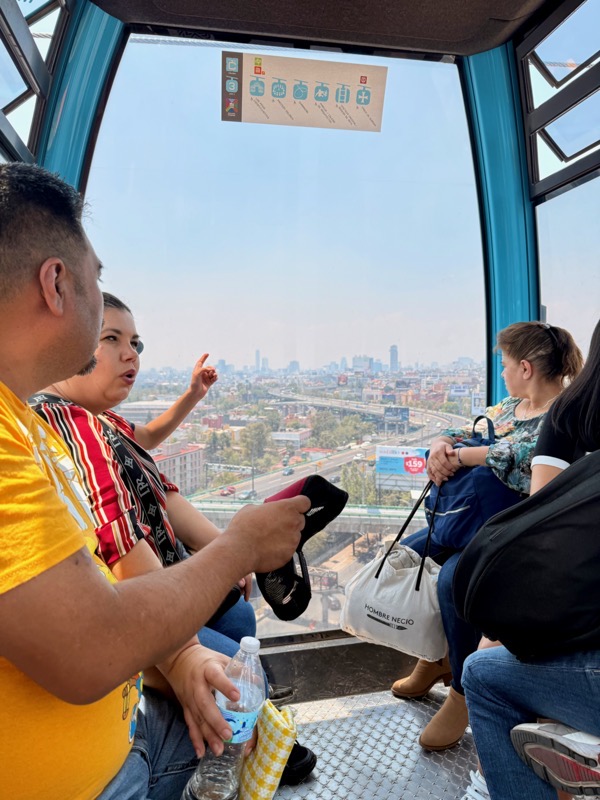
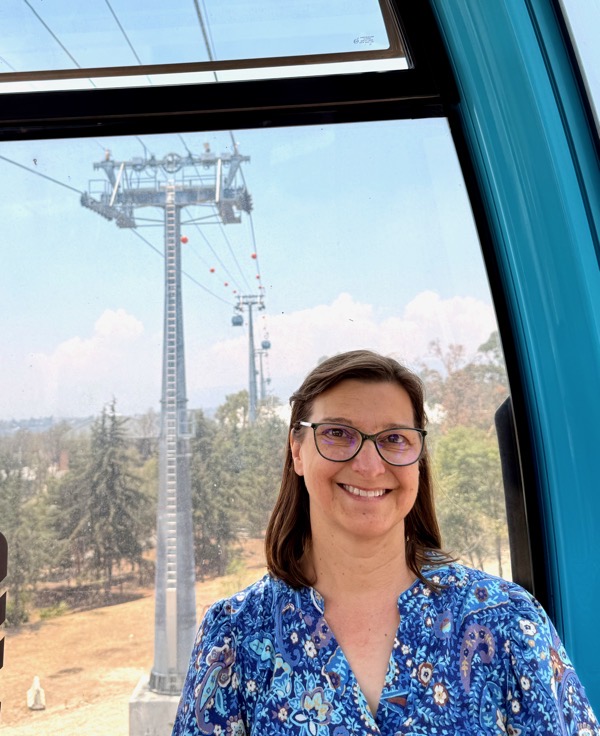
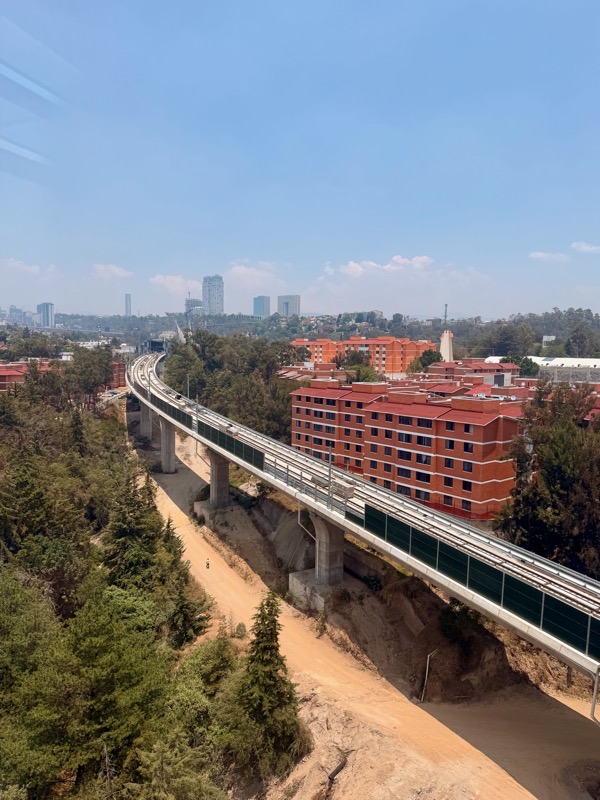
After completing our round-trip ride, we walked to the nearby Los Pinos Metro station, a major hub that connects millions of commuters to all parts of the city. After mapping out our route, we boarded a two-leg journey toward Constitution Plaza (Plaza de la Constitución), in the heart of Mexico City. Although the train cars were packed, transferring between lines was easy. However, for some reason, the second train only slowed down at our intended stop and then continued on without opening its doors. So, we disembarked at the next station.
—— Boarding the Metro ——
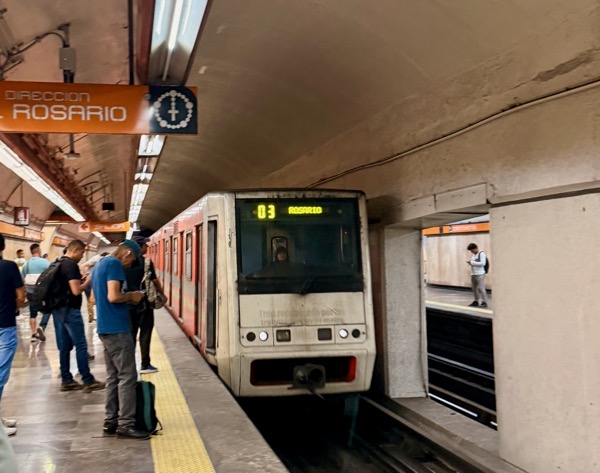
Disembarking, we found ourselves in a suffocatingly huge, cramped market. Because we were becoming dehydrated we purchased bottles of water and then used GPS to find our route out of this overwhelming crowd.
Eventually, we made it to Constitution Plaza, commonly known as El Zócalo. This vast main square at the heart of Mexico City is one of the largest public squares in the world. Surrounded by historic landmarks like the National Palace, the Metropolitan Cathedral, and colonial-era buildings, it has been a central gathering place since Aztec times.
Upon our arrival, the square was bustling with activity. Much of the plaza—and surrounding streets—was covered with colorful tarps sheltering clusters of dome-shaped camping tents beneath them. We later learned that this was part of an ongoing teachers’ strike, as educators protested to recover pension funds that had been withdrawn by the federal government years earlier. In the open areas of the square, Indigenous performers in traditional attire danced to the rhythms of ancestral instruments, filling the air with music and movement. We lingered for a while, taking in the energy of the protest and the beauty of the cultural performances.
—— Constitution Plaza (El Zocalo) ——
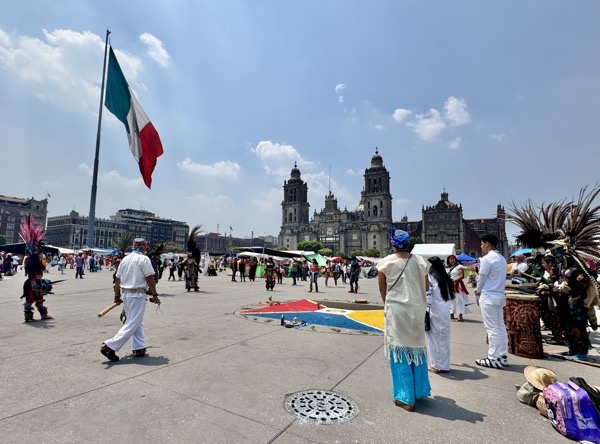
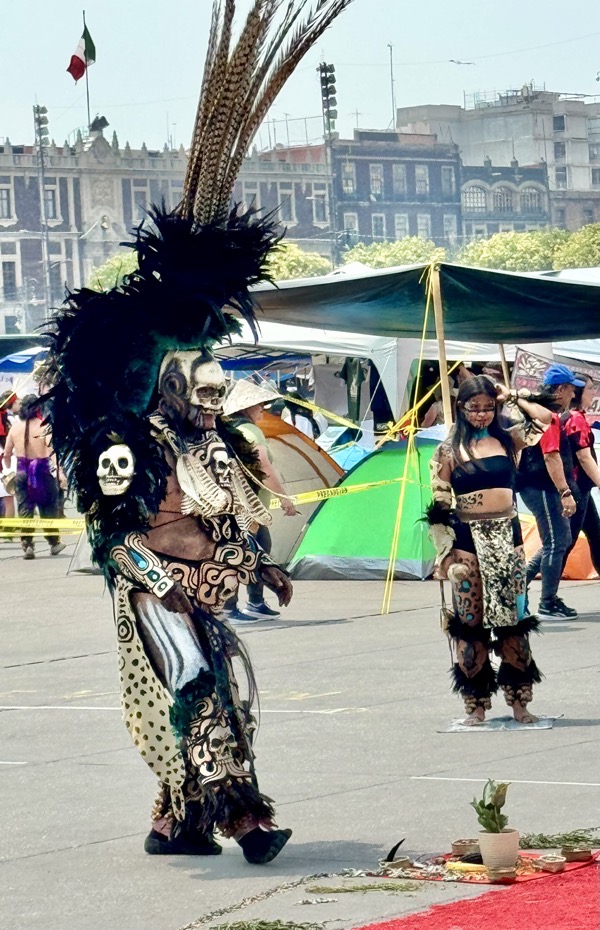
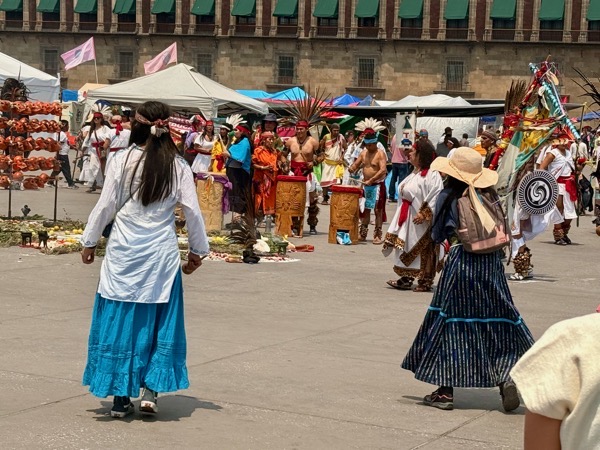
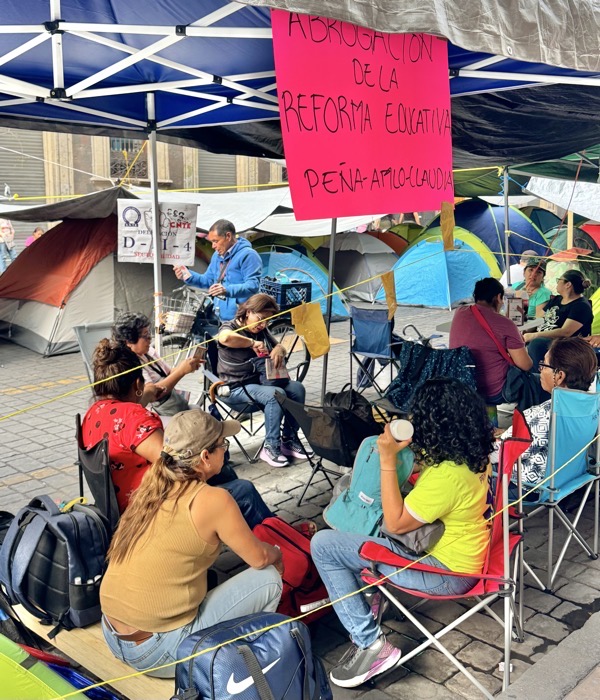
We made our way through the crowds to the Metropolitan Cathedral, where we stepped inside to take in its inspiring interior. The soaring ceilings, intricate altars, and hushed reverence created an evocative atmosphere. We stayed through the conclusion of the ongoing Mass, especially moved by the respectful and solemn music performed by a group using mariachi-style instruments, which added a uniquely Mexican touch to the service.
——— Metropolitan Cathedral ——
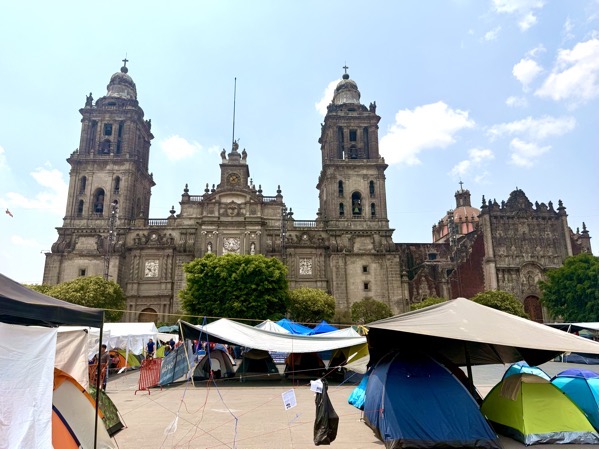
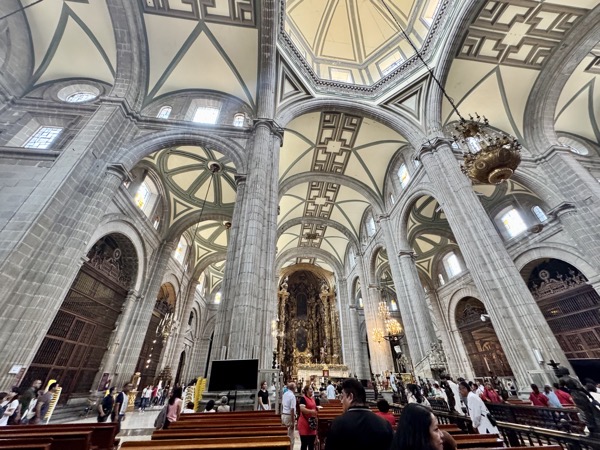
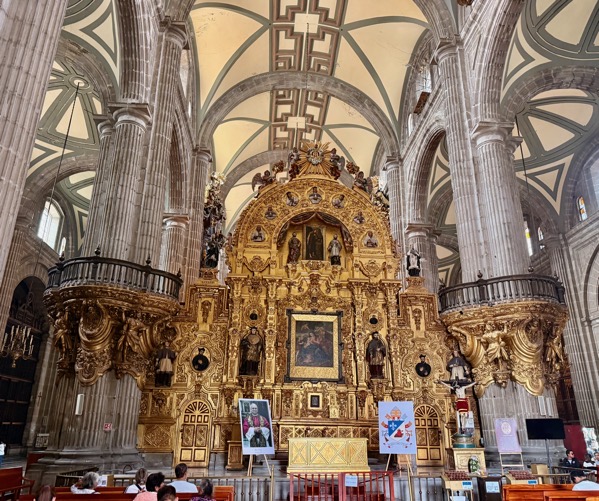
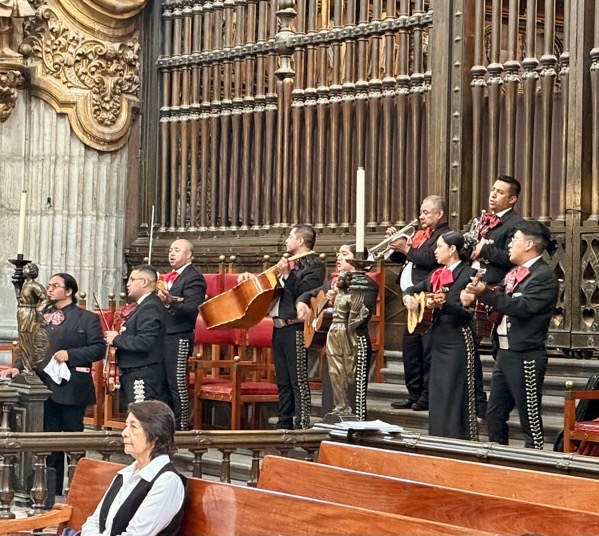
We then proceeded to Templo Mayor, the main temple of the Mexica (Aztec) people in their capital city of Tenochtitlán. Construction began shortly after 1325, when the Mexica settled on the island in Lake Texcoco, and the temple was expanded or rebuilt seven times over the course of their empire to reflect growth and religious significance. In 1521, the Spanish nearly destroyed the entire complex during the conquest of Tenochtitlán, and later built the Metropolitan Cathedral on a portion of its sacred grounds.
After purchasing our 100-peso tickets, we entered the site and began with the indoor exhibits, which provided helpful context through artifacts, models, and explanations of Mexica cosmology and city planning. From there, we went outside to walk among the excavated and partially reconstructed ruins, including the temple platforms, serpent carvings, and ceremonial spaces. At the end of the route, we explored the Templo Mayor Museum, an extensive and beautifully curated space showcasing Aztec artifacts and what scholars have pieced together about the temple’s religious, political, and cultural role.
—— El Templo Mayor ——
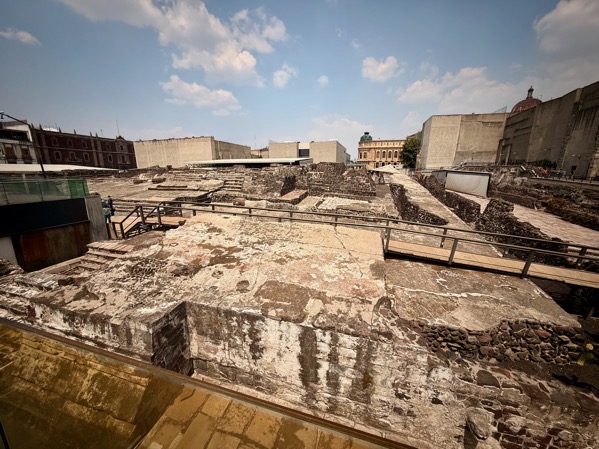
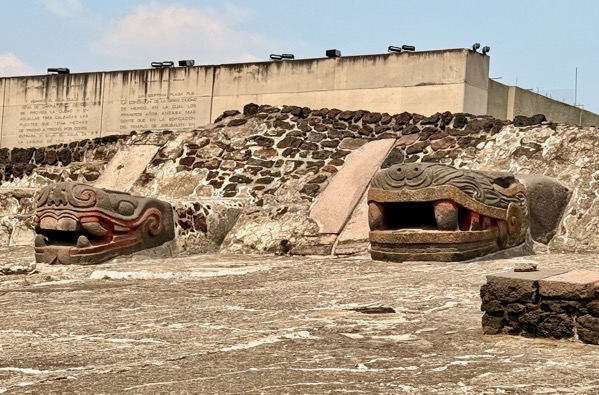
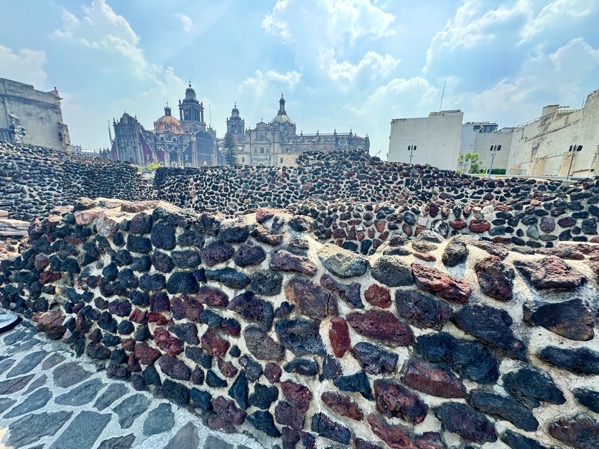
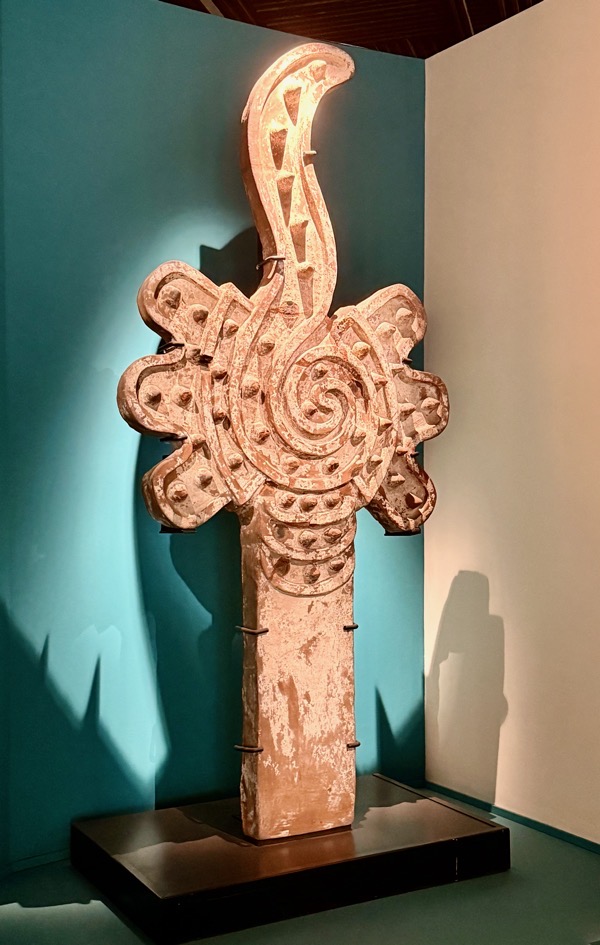
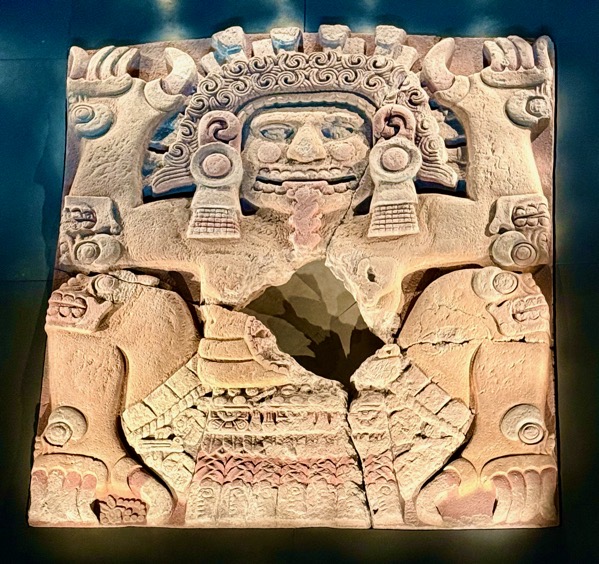
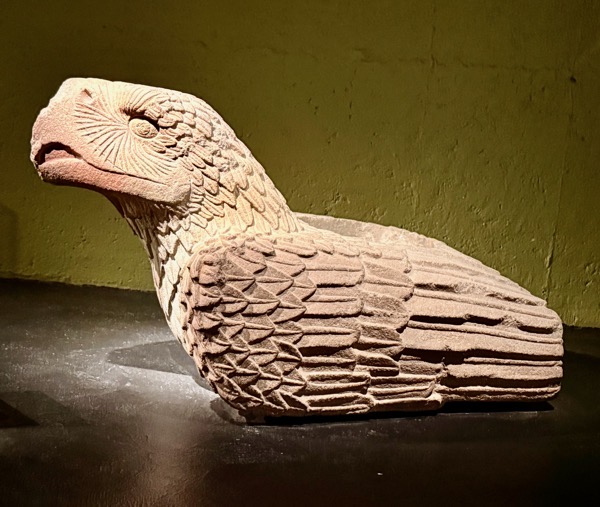
By the time we finished touring the Templo Mayor complex, we were both tired and more than ready to find a place to sit, relax, and enjoy some well-earned food and drink. Back out in the bustling plaza, we were approached by a few young women promoting a restaurant located high in a building near the cathedral, offering open-air seating with panoramic views. Curious and tempted by the promise of a great vantage point, we accepted one of their invitations and were guided through a ground-floor corridor lined with glittering jewelry shops to an elevator that whisked us upward.
At the top, we were warmly welcomed by staff and seated at Restaurante Balcón, right by a window overlooking the vibrant square. After ordering beers and before deciding on entrées, a group of luchadores burst in, playfully stirring up the restaurant to promote a wrestling event scheduled in the same building later that day. It added an unexpected and entertaining twist to our meal.
From our table, we enjoyed a magnificent view of the colorful Zócalo below and the towering Metropolitan Cathedral. Jane ordered ceviche, while I had a similar seafood mix served on crisp crackers—both dishes satisfying. After lingering a while longer and feeling somewhat recharged, we reluctantly descended from our little perch above the city, ready to find our way back to the hotel.
—— Restaurante Balcón ——
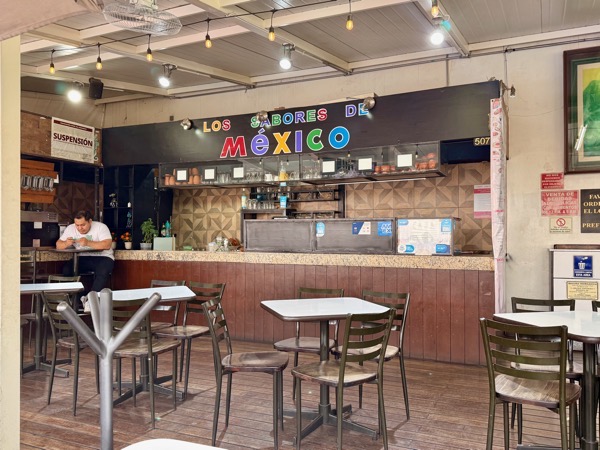

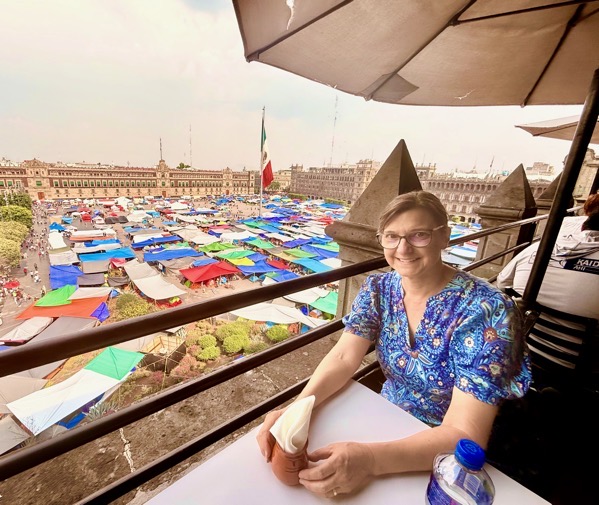
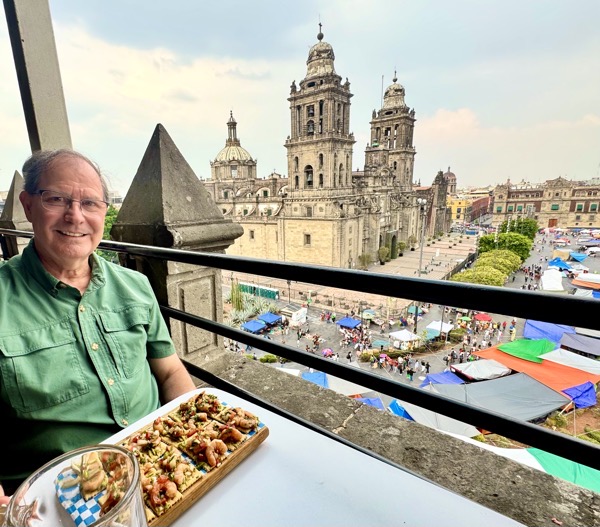


We walked several blocks away from the square to find a more accessible spot for our Uber pickup, since most streets were closed off to traffic. Using the app, we watched as our driver slowly made his way toward us through the terrible traffic. Eventually, he picked us up and we made it back to our “home base.”
In the meantime, Jeff and Comeka had arrived in the city and taxied to our hotel. They stopped by our room for a quick visit, and we caught up for a bit. Comeka, tired from the trip, returned to their room to rest, while the remaining three of us headed to a nearby OXXO to grab some bottled water.
Jeff then went off to pick up take-out tacos for their dinner, while Jane and I bought pastries for tomorrow’s breakfast. We treated ourselves to small cups of ice cream from a kind vendor at Nube D’Leche, located just across from our hotel. Afterward, we returned to our room, happy to unwind after another full and eventful day.
Starting late afternoon and now as night fell, thunderstorms rolled through, bringing cool air and welcome rain. We fell asleep quickly, lulled by the sound of thunder and the satisfaction of a day well spent.
—— Pastry Shopping ——
